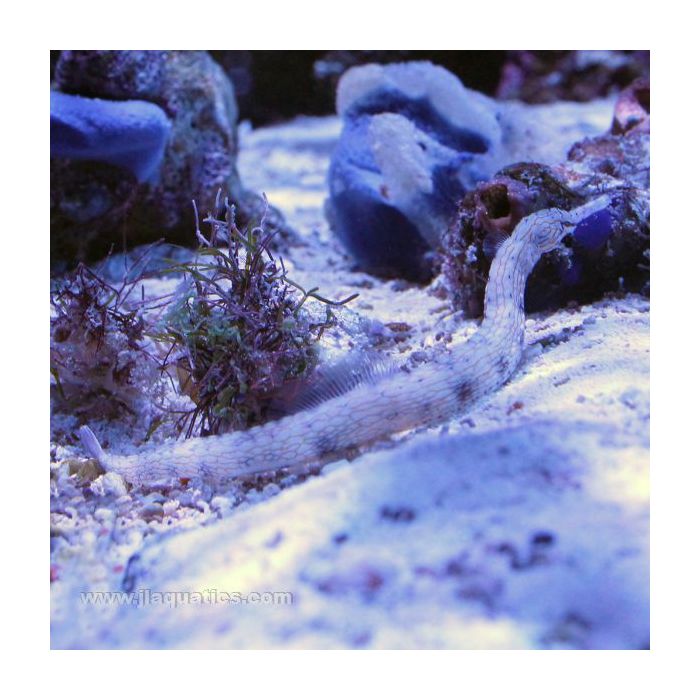Dragon Pipefish (Asia Pacific)
Pipefish are gentle fish related to seahorses. They do best in a dedicated aquarium free from boisterous or aggressive tank mates. Dragonets, seahorses, assessors, jawfish, and small gobies, blennies, and cardinals make good tank mates. We recommend avoiding hawkfish, dottybacks, angelfish, and any predatory or large mouthed species. Most pipefish are imported from the Philippines.
If given enough space pipefish do not fight amongst each other and may form pair bonds in the aquarium. Female pipefish generally have brighter and more contrasting colors than do males. If multiple fish are kept together the females may flash their colors at each other and attempt to woo a male. When breeding the female will deposit her eggs into the male's belly pouch where he carries and protects them until they hatch.
Pipefish are coral and invertebrate safe, only feeding on very small crustaceans such as copepods and minute shrimp. They prefer to eat live foods, and do not take to dry foods, so a variety of high quality meaty items should be offered such as frozen Mysis shrimp, enriched brine shrimp, Tigger pods and Calanus. Pipefish should be fed a minimum of twice daily. A well established aquarium is recommended, preferably with a refugium to aid in supplementing the main aquarium with live prey items. Pipefish feed by picking food items out of the water column in a slow and deliberate manner.
Because of the delicate nature of pipefish we recommend careful attention be paid to eliminate stinging or dangerous animals in their aquarium, such as Aiptasia and Majano anemones, rouge crabs and predatory hitch hikers, and aggressive corals such as galaxy, bubble and Euphyllia sp. to name a few.
br />The Dragon pipefish is a slender fish colored in mottled shades of mustard yellow to olive green with dusty grey bands over its back and many fine lines on its face. It has a small pink tail, and some fish may show small highlights of red on their body or face. Their markings provide excellent camouflage as it slithers along the substrate and between rocks. Sometimes it uses its tail to loosely anchor itself in place. Its movements are graceful and provide a relaxing and interesting display. It grows up to 7 inches; we recommend an aquarium of at least 30 gallons. There have been some reports of this species picking off tiny crustaceans that parasitize stony corals.
















